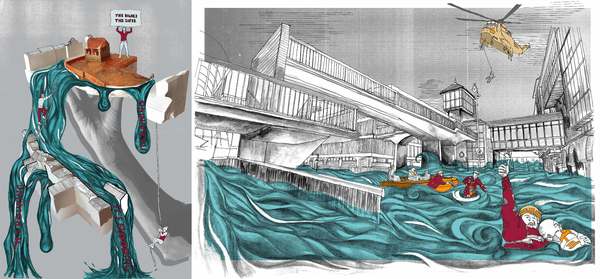This thesis will look at the conceptualisation of narrative architecture and explore the ideas of architecture as a sensation, and design as an attitude. Rather than simply see architecture as style and technology my emphasis will be on how urban areas and buildings feel - the experience of architecture. I have investigated the potential of producing narrative architecture in Shrewsbury that subvert the conventions of architectural production inspired by subcultural expressionism that converged in 1980’s Britain - a hugely influential yet under-studied episode in architectural and cultural experimentation. I contextualise the ideas of narrative architecture and apply it to our present emerging cultural approaches of the 21st century. I use narrative throughout all aspects of my work - as my mode of representation and as a method to remodel and design urban spaces in Shrewsbury.
My design presents a radical remodelling of Shrewsbury’s recreational park into a public place that invites and inspires action against climate change. It will engage with artists, performers, events and markets as it becomes a place of culture, identity and expression; one that forbids oppression and a homogenous society. I aim to create stimulating and narrative architecture that stresses the gravity of our global environmental crisis.
The scheme demonstrates the seamless relationship between landscape and architecture. The stepping of the topography reference the increasing threat of flooding if climate change risks are disregarded. An amphitheatre is set into the topography and an exhibition building appears to have been eroded into the hill side. The entrance to the park leads to a square that generates a gentle transition from city to park. Finally the pavilion, a sculptural form that simulates a crashing wave has a unique character and identity, loud in form yet sensitive in materiality that is open and inviting to all passersby.


